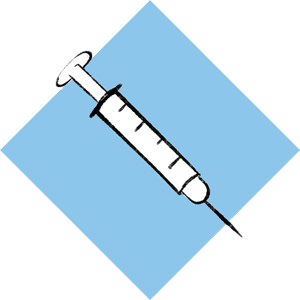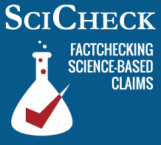Pfizer Documents Show Vaccine Is Highly Effective, Contrary to Social Media Posts
SciCheck Digest
The Pfizer/BioNTech COVID-19 vaccine showed a final efficacy of 91% against symptomatic illness in its phase 3 trial. Social media posts wrongly claim recently released Pfizer documents show the vaccine is “12% effective.” That appears to be a misreading of data released more than a year ago.

Full Story
The Pfizer/BioNTech COVID-19 vaccine was the first to be granted emergency use authorization by the Food and Drug Administration on Dec. 11, 2020. The EUA was based on the interim results from the phase 3 randomized controlled trial involving 36,523 participants — about half receiving the vaccine and the other half getting a placebo — showing the vaccine “was 95% effective in preventing COVID-19 disease among these clinical trial participants with eight COVID-19 cases in the vaccine group and 162 in the placebo group,” the FDA said at the time.
 Months later, on Aug. 23, 2021, the vaccine received full FDA approval, after a review of the manufacturing process, ongoing results from the clinical trial and safety monitoring. At that point, the FDA reviewed updated trial results on about 20,000 vaccine and 20,000 placebo recipients showing the vaccine was 91% effective in preventing symptomatic COVID-19.
Months later, on Aug. 23, 2021, the vaccine received full FDA approval, after a review of the manufacturing process, ongoing results from the clinical trial and safety monitoring. At that point, the FDA reviewed updated trial results on about 20,000 vaccine and 20,000 placebo recipients showing the vaccine was 91% effective in preventing symptomatic COVID-19.
Yet, various social media posts in May have claimed that “just released” Pfizer documents show the vaccine is “12% effective.” That appears to be a misunderstanding of the Pfizer FDA briefing document released in December 2020, before the EUA was granted.
Hundreds of thousands of pages of Pfizer documents on its vaccine trial have been released as part of a Freedom of Information Act request, but two experts who have looked into the 12% claim — a biostatistician and an epidemiologist — have said those FOIA documents don’t appear to be the source of the claim.
Some background on the FOIA release: A group called Public Health and Medical Professionals for Transparency asked the FDA for the more than 300,000 pages of documents related to the Pfizer vaccine four days after the agency gave the shot its full approval. The FDA argued that releasing 500 pages a month was the standard rate and that staffers would need to go through all of the documents to redact some information before releasing them. In early January, a judge in North Texas set a deadline of Jan. 31 for the first batch to be released, with 55,000 pages every month to follow. At that pace, all of the documents will be public by the end of the summer.
The documents have been subject to other false claims, as we’ve written before. But with the efficacy claim, Jeffrey S. Morris, director of the Division of Biostatistics in the Department of Biostatistics, Epidemiology and Informatics at the University of Pennsylvania Perelman School of Medicine, and Gideon Meyerowitz-Katz, an epidemiologist working on his Ph.D. at the University of Wollongong in Australia, found it likely came from a misreading of documents that were made public more than a year ago, the December 2020 Pfizer/BioNTech FDA briefing document for the Vaccines and Related Biological Products Advisory Committee meeting.
The committee, which reviews data on safety and efficacy of vaccines and then makes a recommendation to the FDA, met on Dec. 10, 2020, to discuss the emergency use authorization for the Pfizer/BioNTech COVID-19 vaccine. The briefing document and other materials were posted online before that meeting. The committee recommended that the FDA grant that authorization, which the FDA did the next day.
FDA Briefing Document
On May 5, Morris wrote on his website that the claim about 12% efficacy likely came from an April 3 post on Substack, as best he could determine. That post claimed to find “[d]amning results buried” in the FDA briefing document. But the author’s claim of a possible vaccine efficacy this low is “an erroneous one,” Morris wrote.
Meyerowitz-Katz also examined the claim, finding that “it is completely and utterly false” and “based on a very simple misreading of the documents.”
The author of the Substack post dismisses the vaccine efficacy of 95% in the FDA briefing document — which, as we said above, was based on 162 confirmed cases in the placebo group and eight in the vaccine group — and instead points to data on “suspected but unconfirmed” COVID-19 cases. Those totaled 1,594 in the vaccine group and 1,816 in the placebo, which would work out to a 12% efficacy figure. Except these were individuals who had at least one of a number of symptoms and subsequently tested negative on a SARS-CoV-2 PCR test.
The FDA briefing document mentions these “suspected cases of symptomatic COVID-19 that were not PCR-confirmed” and refers to “the protocol,” which is another Pfizer document that describes in detail the clinical protocol for the trial. It’s also available online.
Morris explained that the phrase “suspected but unconfirmed” isn’t in the protocol, but “the implication is clear.”
“Suspected” is used in the protocol in explaining when an unplanned PCR test should be given to a trial participant due to reported symptoms. “As described in Section 8.13, page 93/146, of the protocol,” Morris wrote, “they did this by instructing subjects to immediately contact the site to set up an unplanned potential COVID-illness visit, ideally within 3 days, if they experienced any of the following symptoms anew that COULD indicate potential COVID-19: fever, cough, shortness of breath, chills, muscle pain, sore throat, loss of taste/smell, diarrhea, and vomiting. Anyone reporting one of these symptoms is a ‘suspected’ COVID-19 case who is to report for an unplanned clinical visit to determine whether it meets the COVID-19 case definition or not,” and that visit would include a PCR test.
“If the test is positive, they are a ‘confirmed’ COVID-19 case, and by context it is clear that the others are ‘suspected but unconfirmed,’” Morris said, noting that those symptoms “of course could come from many causes not just COVID-19 infections.”
Meyerowitz-Katz wrote of the “suspected but unconfirmed” phrase: “What this actually means is that these people did not have a Covid-19 infection.”
To assume they did would be to assume an incredibly high false-negative rate for the PCR tests of more than 95%, Morris said, but the data show these tests are highly accurate. The PCR test used in the trial showed a 4% false-negative rate in this FDA document, Morris pointed out.
We asked Pfizer about these claims, and the press office told us of the released documents: “All information is reviewed meticulously by experienced medical and clinical experts who are equipped in interpreting the data in the context of the full package submitted. Non-experts reviewing such scientific data is likely to lead to information being misinterpreted or taken out of context. Regulatory authorities around the world have authorized the Pfizer-BioNTech COVID-19 vaccine and expert medical committees have and continue to review the data and recommended it.”
More than 126 million people in the U.S. have been fully vaccinated with the Pfizer/BioNTech vaccine, and it has continued to show strong effectiveness in real-world conditions, as found by various studies from around the world. For instance, a study published in the New England Journal of Medicine in July 2021 found the vaccine was 88% effective in preventing symptomatic disease in the U.K. against the delta variant.
And it still has performed well in preventing severe disease during the omicron wave, even as effectiveness against symptomatic illness waned. A Centers for Disease Control and Prevention study found that adults who had received two doses of either the Pfizer/BioNTech or Moderna vaccine had a 79% lower risk of dying or needing a ventilator if hospitalized with COVID-19, compared with unvaccinated adults, during the omicron wave. The risk was 94% lower for those who also had received a booster vaccine dose.
Editor’s note: SciCheck’s COVID-19/Vaccination Project is made possible by a grant from the Robert Wood Johnson Foundation. The foundation has no control over FactCheck.org’s editorial decisions, and the views expressed in our articles do not necessarily reflect the views of the foundation. The goal of the project is to increase exposure to accurate information about COVID-19 and vaccines, while decreasing the impact of misinformation.
Sources
“FDA Takes Key Action in Fight Against COVID-19 By Issuing Emergency Use Authorization for First COVID-19 Vaccine.” Press release. FDA.gov. 11 Dec 2020.
“FDA Approves First COVID-19 Vaccine.” Press release. FDA.gov. 11 Dec 2020.
Public Health and Medical Professionals for Transparency. Pfizer’s Documents. accessed 13 May 2022.
Siri Glimstad letter to FDA. Freedom of Information Act Request Expedited Processing Requested. 27 Aug 2021.
Public Health and Medical Professionals for Transparency v. Food and Drug Administration. U.S. District Court for the Northern District of Texas. No. 4:21-cv-1058-P. Order. 6 Jan 2022.
Vaccines and Related Biological Products Advisory Committee Meeting. “FDA Briefing Document, Pfizer-BioNTech COVID-19 Vaccine.” FDA.gov. 10 Dec 2020.
“Vaccines and Related Biological Products Advisory Committee December 10, 2020 Meeting Announcement.” FDA.gov. 10 Dec 2020.
Morris, Jeffrey. “Do the recent 80k pages of Pfizer documents released really show vaccine efficacy was only 12%?” COVID-19 Data Science. 5 May 2022.
Elijah, Sonia. “Was Pfizer’s 95% vaccine efficacy fraudulent all along?” Substack. 3 Apr 2022.
Meyerowitz-Katz, Gideon. “Covid-19 Vaccines Are Still Effective.” Medium. 6 May 2022.
“A Phase 1/2/3 Study to Evaluate the Safety, Tolerability, Immunogenicity, and Efficacy of RNA Vaccine Candidates Against COVID-19 in Healthy Individuals.” Clinical Protocol. Pfizer. Nov 2020.
Xpert Xpress SARS-CoV-2. Instructions for Use. FDA.gov. 2021.
Centers for Disease Control and Prevention. “Science Brief: COVID-19 Vaccines and Vaccination.” 15 Sep 2021.
Lopez Bernal, Jamie et al. “Effectiveness of Covid-19 Vaccines against the B.1.617.2 (Delta) Variant.” New England Journal of Medicine. 21 Jul 2021.
Tenforde, Mark W. et al. “Effectiveness of mRNA Vaccination in Preventing COVID-19–Associated Invasive Mechanical Ventilation and Death — United States, March 2021–January 2022.” Morbidity and Mortality Weekly Report. 18 Mar 2022.
Pfizer Media Relations. Email to FactCheck.org. 13 May 2022.


